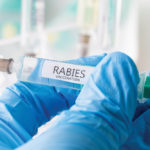
Make sure your calves get off to a proper start
Beef 911: Calves need adequate amounts of high-quality colostrum after birth and substitutes are a good option

Product for reducing shrink during transport worth considering
Beef 911: A feed supplement that counteracts dehydration offers animal welfare benefits and an economic return

When the temperature soars, feedlot cattle can suffer
Beef 911: Charges that beta-agonists caused severe lameness prompted a study that found a very different reason for fatigue cattle syndrome

Get as much health information as you can when buying cattle
Beef 911: Producers are doing a good job of caring for their cattle but often this information is not passed on to buyers

Preconditioning is good for the entire cattle industry
Beef 911: There are a multitude of benefits but producers need to be compensated for the extra work and risk

How to prevent parasite resistance to worms and flies
Beef 911: Developing and using good protocols will keep these valuable treatments working for you and your herd

We all need to be ever vigilant when it comes to rabies
Beef 911: This fatal disease is very rare, but animal owners and rural residents should always be on the lookout for telltale signs

Dispelling the myths about steroid use in beef production
Beef 911: Talk about ‘steroid-free beef’ is misleading — they are rarely used and only for very specific reasons

An ounce of prevention is worth 100 pounds
Beef 911: Calves that get sick early in life struggle to catch up with their herdmates and are prone to getting ill again

The facts about the dangers of antibiotic resistance
Beef 911: The cattle industry is doing a good job to prevent resistance and we are improving those efforts

